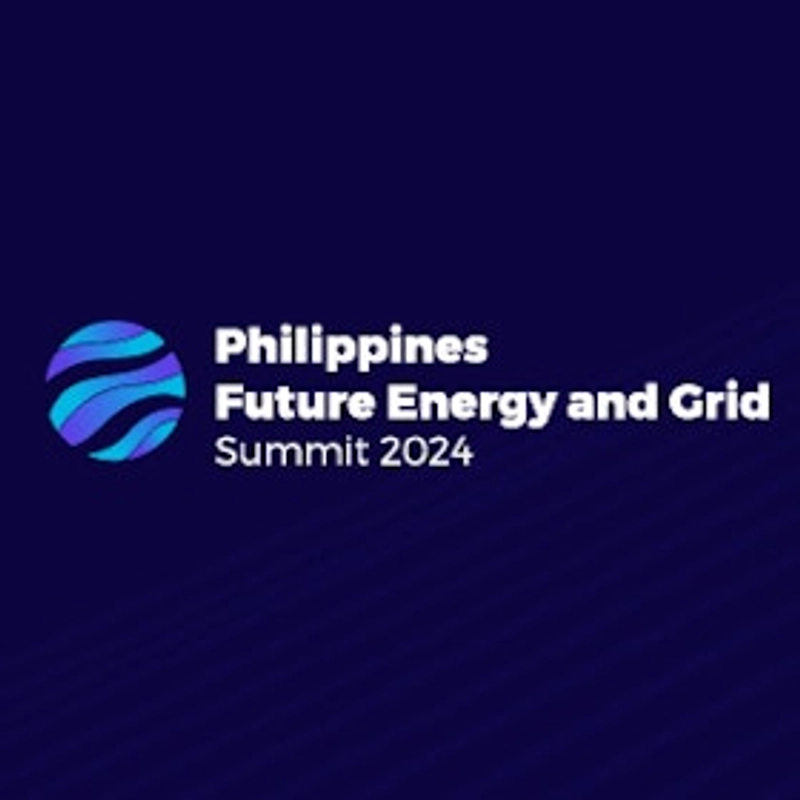Energy Production & Transportation 中的 Philippines 事件


The Philippines Future Energy and Grid Summit
Philippines Future Energy and Grid Summit: Powering the Nation’s Transition Toward a Resilient Energy Future
In the heart of Manila, a critical dialogue is taking shape — one that will influence the trajectory of the Philippines’ energy infrastructure and reshape the nation’s grid systems for generations to come. The Philippines Future Energy and Grid Summit, organized by BUIM Group, is emerging as a pivotal event in the country’s transformation toward a more sustainable, resilient, and forward-looking energy landscape.
As the world shifts toward cleaner energy sources, nations like the Philippines must strike a balance between development, demand, and decarbonization. This summit provides the perfect forum for industry leaders, government officials, engineers, innovators, and policy influencers to connect, exchange ideas, and catalyze change in the way energy is generated, distributed, and managed across the country.
A Strategic Summit for a Nation at an Energy Crossroads
The Philippines Future Energy and Grid Summit is not just a business gathering — it is a critical platform for energy transformation. With energy demand rising and pressure mounting to reduce emissions and embrace renewable sources, the Philippines stands at a decisive turning point. This summit is designed to address exactly that.
Central Themes of the Summit Include:
Grid modernization and smart grid deployment
Integration of renewable energy into legacy systems
Energy storage solutions and battery innovation
Digital transformation of energy operations
Policy development and regulatory frameworks
Infrastructure resilience and disaster-readiness
Through high-level discussions and technical deep-dives, attendees will explore how these themes can be translated into tangible solutions tailored to the Philippine context.
Engaging Presentations from Global and Local Experts
One of the key attractions of the Philippines Future Energy and Grid Summit is its expertly curated program of speakers. Delegates can look forward to presentations that are not only informative but also actionable — grounded in real-world examples and tailored insights.
Types of Sessions Expected:
Keynote Addresses from government ministers, global energy thought leaders, and sustainability pioneers
Panel Discussions featuring diverse voices from both public and private sectors
Technical Workshops focused on grid management, smart metering, and energy analytics
Case Studies of successful energy transitions from regional and international markets
These sessions will explore pressing challenges and emerging opportunities while showcasing innovation that is already shaping the energy future in Southeast Asia.
Networking and Collaborative Opportunities
Beyond content, the summit offers a rare opportunity for cross-sector networking. From startup innovators and engineers to utility CEOs and policymakers, the event draws a dynamic mix of professionals committed to rethinking how energy systems operate.
Attendees can expect:
B2B matchmaking opportunities
Roundtable sessions for focused dialogue
Product demonstrations and solution showcases
VIP receptions for strategic partnerships
This collaborative environment makes it easier to forge alliances, form pilot project teams, and explore joint ventures that can accelerate energy transformation in the region.
The Urgency of Energy Transition in the Philippines
With over 7,000 islands, a growing population, and increasing urbanization, the Philippines faces unique challenges in its energy landscape. Grid stability, energy access in remote areas, and disaster resilience are just a few of the pressing issues. The Philippines Future Energy and Grid Summit directly addresses these challenges by promoting discussions and innovations that are both scalable and adaptable.
Key Challenges Highlighted:
Aging grid infrastructure vulnerable to extreme weather events
Inequitable energy access, especially in off-grid and rural regions
High reliance on fossil fuels, limiting the country’s energy independence
Lagging investment in energy storage and digital systems
By bringing these issues to the forefront, the summit fosters a shared vision — one where stakeholders work together to create a cleaner, more reliable grid.
How Technological Innovation Is Driving Grid Transformation
A major focus of the summit will be on technological advancement in energy systems. From automation and AI in energy management to advanced battery solutions and blockchain in electricity trading, the Philippines is on the verge of adopting groundbreaking tools to future-proof its grid.
Key Technologies on Display:
Smart grid components: sensors, control centers, demand response systems
Renewable integration platforms: hybrid solar-diesel setups, microgrids
Cloud-based energy analytics and forecasting
AI-powered fault detection and grid optimization tools
Battery energy storage systems (BESS) for load balancing and backup
These innovations are no longer futuristic — they are current and crucial tools needed to meet rising energy demands while aligning with global climate goals.
Who Should Attend the Philippines Future Energy and Grid Summit?
Given the broad scope and strategic importance of the summit, it is relevant to professionals and organizations across the energy value chain.
Target Attendee Groups:
Utility and grid operators seeking solutions for modernizing infrastructure
Renewable energy developers looking to connect with policymakers
Regulators and government agencies developing long-term energy policies
Engineering firms and consultants working on system design and optimization
Investors and financiers interested in clean energy projects
Academics and researchers exploring energy transition models
Technology providers offering smart grid and storage solutions
Participation offers not only insights and updates but a chance to shape the dialogue and contribute directly to the Philippines’ energy roadmap.
A Must-Attend Event for Energy Professionals
The Philippines Future Energy and Grid Summit is not just another industry conference — it is a strategic gathering that seeks to redefine the future of energy in the Philippines. Through knowledge-sharing, technology demonstrations, and collaborative networking, the summit will help pave the way for an energy-secure, economically vibrant, and environmentally sustainable future.
As the Philippines accelerates its journey toward renewable energy adoption and grid modernization, this summit offers the ideas, tools, and partnerships needed to move from ambition to action.


SOLAR & STORAGE LIVE - PHILIPPINES
SMX会议中心位于马尼拉帕赛的中心地带,随着菲律宾Solar & Storage Live的开幕,它变成了创新和机遇的纽带。本次活动不仅仅是一次聚会,它是一个市场、一个论坛,也是对清洁能源在全球增长最快的市场之一中的巨大潜力的庆祝活动。
菲律宾Solar & Storage Live不仅是一个展览;它汇集了行业巨头、创新者、政策制定者和技术领袖。在这里,安装商、分销商、项目开发人员和解决方案提供商齐心协力,建立联系,分享见解,推动太阳能和储能行业向前发展。
从商业和工业太阳能项目的尖端解决方案到住宅和社区计划的变革性技术,菲律宾Solar & Storage Live展示了清洁能源领域的各种可能性。这是一个思想成型、建立合作伙伴关系和企业蓬勃发展的平台。
菲律宾Solar & Storage Live由Terrapinn控股有限公司主办,是太阳能和储能领域创新的灯塔。本次活动侧重于响应式能源、电网、电动汽车和光伏技术的未来,突破了可持续能源解决方案的可能性界限。
来自全球各地的参展商齐聚一堂,展示他们的最新创新,涵盖电池制造、能源管理、电动汽车生产等。从行业巨头到新兴初创企业,菲律宾Solar & Storage Live全面概述了塑造能源未来的最新趋势和技术。除@@
展厅外,菲律宾Solar & Storage Live还为专业发展和知识交流提供了丰富的机会。由行业领导者参加的免费会议提供了对关键主题的见解,而安装培训中心则为太阳能行业有抱负的专业人员提供实践培训。
该活动的一大亮点是太阳能和储能直播大奖,该奖项旨在表彰在太阳能和能源领域的杰出成就。通过庆祝创新和卓越,菲律宾Solar & Storage Live激励行业参与者达到新的高度,推动能源格局的积极变化。
菲律宾Solar & Storage Live不仅仅是展示产品,还要催化变革。通过为网络、协作和商业往来提供一个首屈一指的平台,该活动在推广可持续能源解决方案和推动向更清洁、更绿色的未来过渡方面发挥了至关重要的作用。
在世界努力应对气候变化和能源安全的挑战之际,菲律宾Solar & Storage Live是希望的灯塔,这象征着我们对建设由清洁能源驱动的更美好明天的集体承诺。


PowerTrends
POWERTRENDS活动为探索当前正在进行的全球能源转型及其对地缘政治和国际关系的深远影响提供了一个重要平台。正如国际可再生能源署(IRENA)总干事阿明所强调的那样,向可再生能源(RE)的持续转变不仅是对气候变化的回应,而且正在重新定义全球能源格局。这种转变以许多有利趋势为标志,这些趋势正在加速向清洁能源的过渡,重塑全球能源市场的动态。
推动这种变化的最重要趋势之一是可再生能源技术成本的迅速下降。在过去的十年中,太阳能、风能和其他可再生能源技术变得越来越实惠,使它们成为化石燃料的可行替代品。这种成本降低,加上人们对化石燃料消耗带来的环境和经济挑战的认识不断提高,使可再生能源成为政府、企业和消费者更具吸引力和更实用的选择。在环境目标和不断增长的可再生能源商业案例的推动下,世界各国政府也发挥着至关重要的作用,制定了更雄心勃勃的可再生能源目标。这些承诺得到了强有力的政策框架、经济激励措施以及公众对清洁能源解决方案日益增长的渴望的支持。
除了成本下降和政府的大力支持外,技术创新正在推动可再生能源行业向前发展。储能、智能电网技术和先进材料方面的突破正在实现更高效的能源生产、分配和储存。能源行业的数字化也发挥着关键作用,它允许将可再生能源进一步整合到现有电网中,并改善对供应和需求波动的管理。因此,可再生能源不再被视为利基解决方案,而是未来能源系统的核心组成部分。
能源转型的另一个关键驱动力是大型国际公司越来越多地转向可再生能源。许多大公司,尤其是科技和制造业等领域的大型企业,越来越多地承诺使用可再生能源来满足其电力需求,这是其可持续发展目标的一部分,并减少对化石燃料的依赖。这种转变不仅是出于环境考虑,也是因为人们认识到,与波动的化石燃料价格相比,可再生能源可以提供更稳定和更可预测的长期成本。随着这些公司处于领先地位,他们的影响力正在帮助加快各行各业和地区对可再生能源的采用。
但是,随着全球能源市场不再使用化石燃料,地缘政治格局也在发生变化。随着石油、天然气和煤炭需求的下降,围绕化石燃料开采和消费建立的传统联盟可能会减弱。尽管由于其他原因,一些地缘政治关系将保持不变,但这些关系的能源支柱将不那么重要。各国开始重新评估其能源外交,认识到能源的未来在于可再生能源。新的联盟和能源举措正在出现,特别是在德国、阿联酋和印度等国家之间,这些国家正在将自己定位为可再生能源开发和创新的领导者。尽管这些举措仍处于初期阶段,但它们在未来几年可能会产生越来越大的地缘政治影响。
向可再生能源的过渡也正在重塑全球能源连接和依赖关系的地理格局。尽管全球能源市场传统上是由远距离的石油和天然气贸易定义的,但向可再生能源的转变预计将导致更多区域能源市场的发展。目前从遥远地区进口化石燃料的国家可能越来越多地寻求开发国内可再生能源,并与邻国整合电网。这种能源生产的权力下放可以减少对长距离能源运输的需求,并在相互合作和共享资源的基础上建立新的区域能源网络。
POWERTRENDS 是了解正在进行的全球能源转型动态的关键事件。随着向可再生能源的加速转移、地缘政治联盟的变化以及新的技术进步,能源格局正在经历深刻的重组。随着世界向更可持续的能源未来迈进,POWERTRENDS的讨论将有助于指导利益相关者应对这一转变的复杂性,确保能源安全、经济增长和环境可持续性齐头并进